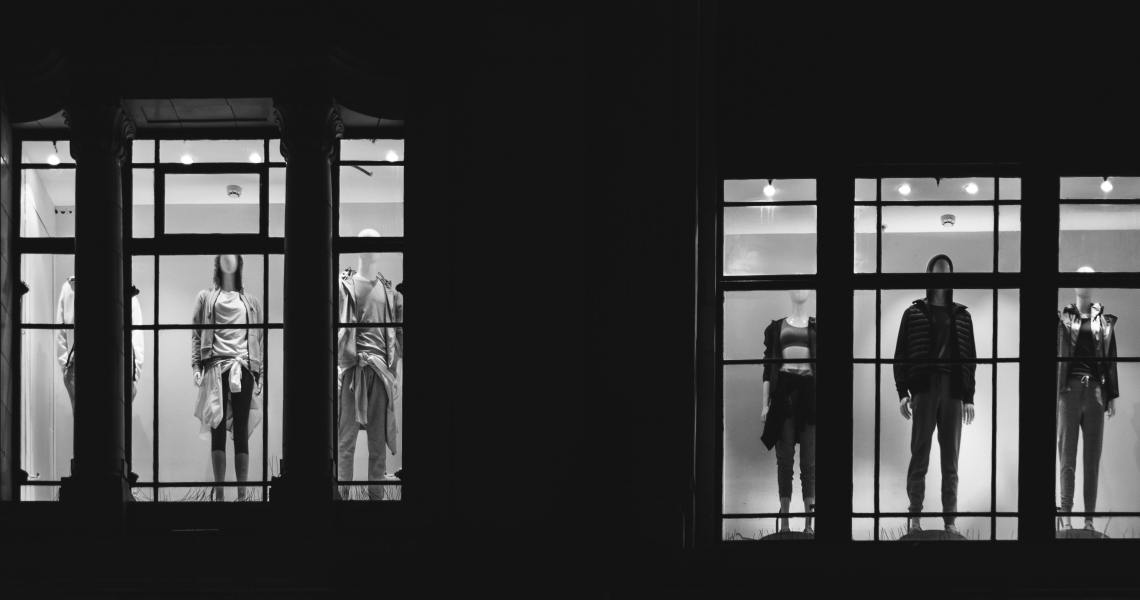Fashion companies are aiming to avoid allegations of greenwashing after years of outcries and lawsuits, ushering in green hushing as a new corporate practice.
With more companies gaining sustainability certifications, coming out with sustainability reports and committing to the Sustainable Development Goals set out by the United Nations, the brands that don’t often face consumer criticism. That is where green hushing comes in: In short, it involves brands going quiet about their commitments to sustainability to avoid being penalized for not addressing them or addressing them too late.
What is it?
“Green hushing is a combination of the heavy criticism brands were facing for their environmental shortcomings and, in many cases, their greenwashing, as well as the result of governments not providing brands and companies with a clear and actionable roadmap toward sustainability and environmental improvement,” said Stuart Ahulm, co-founder of experiential recycling platform SuperCircle and footwear brand Thousand Fell. “Companies don’t know what to do. They don’t want to get called out for doing the wrong thing, and so they do nothing and stay quiet about it.”
Brands that have fallen short on sustainability commitments include Shein, Pacsun, Revolve and H&M. But green hushing also extends to companies that don’t promote their sustainability commitments.
An October 2022 report by climate consultancy firm South Pole showed that one in four companies is keeping quiet about its science-based targets while still taking action to support them. Three-quarters of all surveyed companies across 12 countries said they’ve increased their net-zero budgets over the past year. The majority of those not on track to meet their net-zero goals are still expanding their sustainability teams.
Why is green hushing happening?
Green hushing is a direct result of greenwashing, a practice where brands use sustainability to help improve their image and misdirect customers about their impact.
“Over the last 10 years, brands have taken the position that they know what’s better for the environment — but still within the context of a high-growth business model, which is a bit hypocritical. They’re saying that they know what the priorities are, while they’re focusing on growth,” said George Harding Rolls, campaign manager at Changing Markets Foundation, a Dutch non-profit formed to expedite solutions to consumer product sustainability challenges. “All disclosures until now have been voluntary. Brands are setting voluntary targets, assessing them themselves and creating voluntary, multi-stakeholder initiatives or certification schemes, which are largely run by the industry themselves, as well.” This has led to greenwashing on a mass scale.
2022 was a big year for corporate communications around ESG commitments, with brands coming out with certifications and sustainability reports that still didn’t disclose all of their climate impact data.
According to Ahulm, there are pros and cons to having sustainability information front and center in marketing. “On one hand, it has allowed the topic of sustainability — including sustainable sourcing, sustainable manufacturing, resale, recycling and circularity — to become more prominent and well-known to the consumer,” he said. “That’s massively important; there needs to be market development within these new business models and business practices, in order to increase adoption and have them become more widespread. On the other hand, it’s hard to substantiate some of these claims, and it can be difficult for customers and stakeholders to really understand what’s happening.”
Brands like Pangaia and Patagonia have emerged as brand winners for transparent communication. Over the past couple of years, customers have been clamoring for more transparency when it comes to brands’ sustainability and impact. But with brands self-regulating and relying on industry-created schemes, sustainability efforts in the industry have often backfired, in the eyes of consumers.
Last year uncovered the issues with inefficient or incomplete sustainability frameworks, like the Higg Index. The index, used by brands like fast-fashion giants H&M and Asos, has been central to the July 2021 lawsuit against H&M for greenwashing. The Sustainable Apparel Coalition has since taken it under review to address necessary improvements. Now, some brands are saying they’re unsure which standards are rigorous enough, with many preferring to keep quiet about their sustainability actions to avoid similar lawsuits and media attention.
How is it being addressed?
A number of solutions are being developed to address the industry’s self-regulation. That includes third-party certifications, blockchain-based digital product IDs or digital passports, and, most importantly, legislation across multiple consumer markets.
The number of independent third-party certifications is still small. Included is B Corp, the most rigorous certification for consumer goods companies. Fashion brands that have joined the ranks of B-Corp companies in the last two years include Pangaia, Chloé, Veja and secondhand marketplace Vestiaire Collective. However, some certifications take a long time to be awarded, leading some brands to avoid the time investment required.
For their part, digital passports have started to catch on amid the rise in awareness of the blockchain over the last two years. “Once created, a digital passport cannot be altered, edited or destroyed. Accusations of greenwashing or attempts at green hushing will be overcome by a digital record that follows the product, even if it is resold secondhand, which can help brands build credibility within their product offering,” said Lars Rensing, CEO at enterprise blockchain and web3 company Protokol. However, not all data on sustainability can be input onto the blockchain automatically. Much requires input by a brand, leaving room for inaccuracies.
The most important way that greenwashing is being addressed is through legislation, which is set to affect the industry starting this year. Keeping quiet may be a useful way to avoid media attention and a possible fallout while figuring out how to function in the newly regulated environment.




